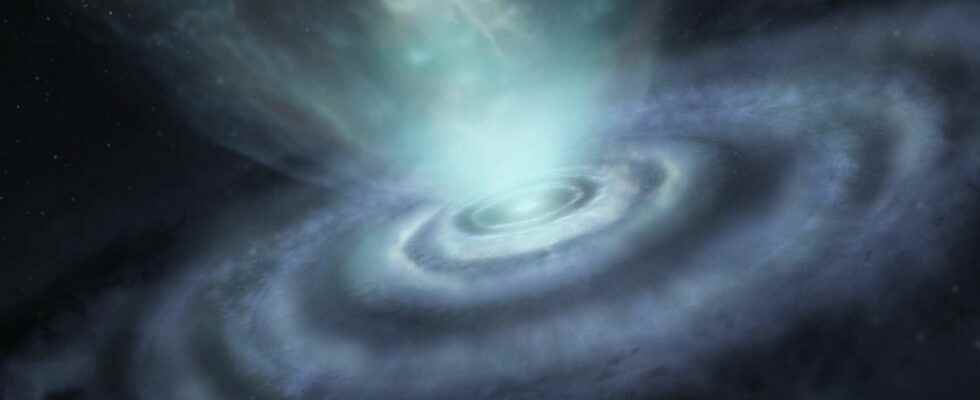In our Universe, even stars eventually die. And it is the swan song of one of them that researchers have had the good fortune to observe recently. A star bowing out in an astonishing spectacle, forming strange structures around it.
You will also be interested
[EN VIDÉO] Eta Carinae: the Great Eruption of a massive star Eta Carinae, or Eta Car, is famous for its bright and unusual explosion, called the “Great Eruption”, which was observed in the 1840s. NASA teams modeled the phenomenon in 3D and this video presents the story of this event. Observations using NASA’s Hubble Space Telescope and the Chandra X-ray Observatory reveal details across different light spectra.
V Hydrae is of these stars that the astronomers call carbon stars. A so-called star asymptotic branch of giants (AGB). A branch that eventually join almost all of the main sequence stars who present a mass comparable or up to 10 times that of our Sun. They are said to age there slowly, for 100,000 years or more. Ejecting more than half of their mass. And they end up turning into planetary nebulae.
V Hydrae is around 1,300 light years of the earth. Taken in the constellation of the’Hydra without really belonging to him. And if astronomers are particularly interested in it, it’s because it behaves strangely. They have already observed plasma eruptions which occur approximately every eight and a half years. Perhaps the result of an almost invisible companion.
Today, new discovery concerning V Hydrae. From researchers from the University of California at Los Angeles (UCLA) and the Jet Propulsion Laboratory (JPL) of the Nasa (United States) have just found six slowly expanding rings. As well as a structure perpendicular and centered on the star, in the shape of an hourglass, ejecting matter in space at some 800,000 km/h. Like a magnificent singing swan!
A mechanism that remains to be understood
that V Hydrae get rid of her atmosphere is fully expected. “But to our surprise, we found that it expels matter in the form of rings”comments Mark Morris, professor at UCLA, in a communicated. Rings that seem to be blown outward every few hundred years. All over an interval of about 2,100 years. Thanks to a mechanism that is still unknown and that astronomers now intend to study more closely.
Lucky to catch V Hydrae in the act
These rings could be related to the presence in orbit around V Hydrae, a close companion star — the one mentioned above — and a hypothetical other more distant. But regardless, the researchers believe that this work “dramatically reveal that the classic model of star death in the AGB phase is at best incomplete and at worst incorrect”. “V Hydrae appears to be in a critical transitional phase through which dying stars go through in all end of life»says Raghvendra Sahai, astronomer at JPL, still in the UCLA press release. “The phase where they lose the most mass. And it is likely that this phase will not last very long. We were lucky to catch V Hydrae in the act. »
All the more fortunate since the large amounts of dust surrounding the dying star could only be penetrated by Alma, the Atacama’s Large Millimeter/Submillimeter Antenna Array. And then it’s data infrared optics and ultraviolet rays which allowed the researchers to obtain a remarkable image of the astonishing spectacle offered by V Hydrae. A show like our Star, the Suncould also one day be called upon to produce.
Interested in what you just read?
